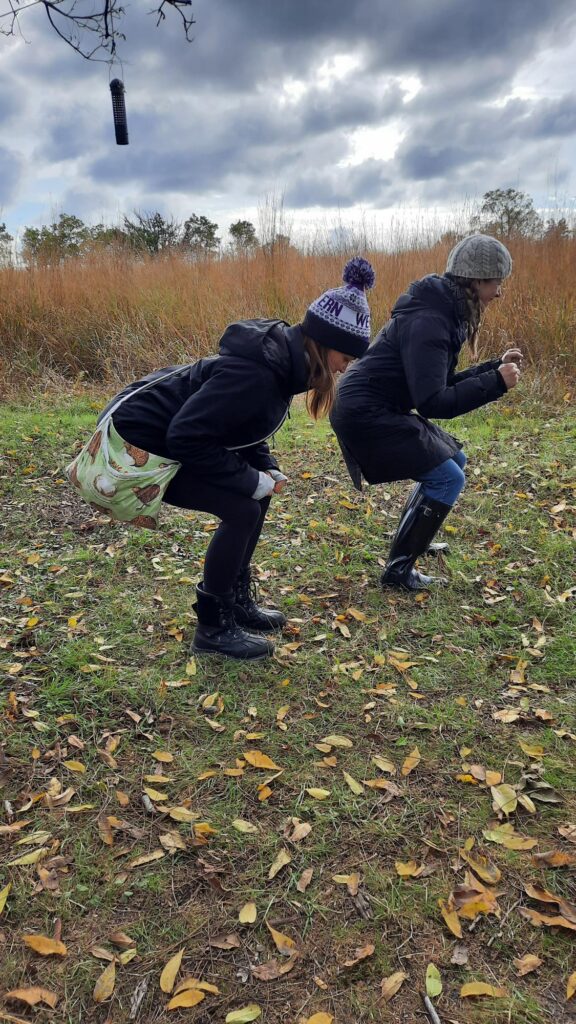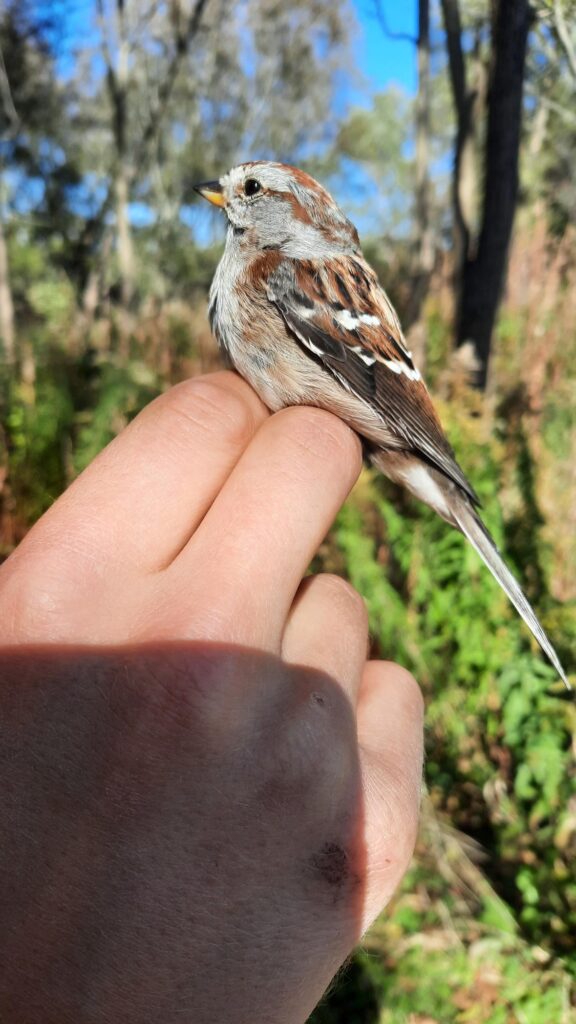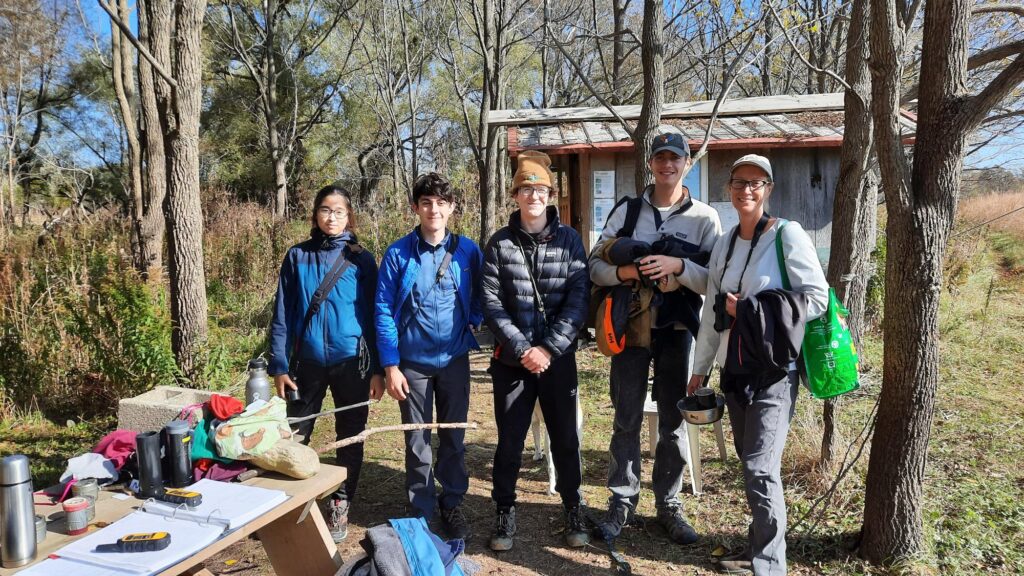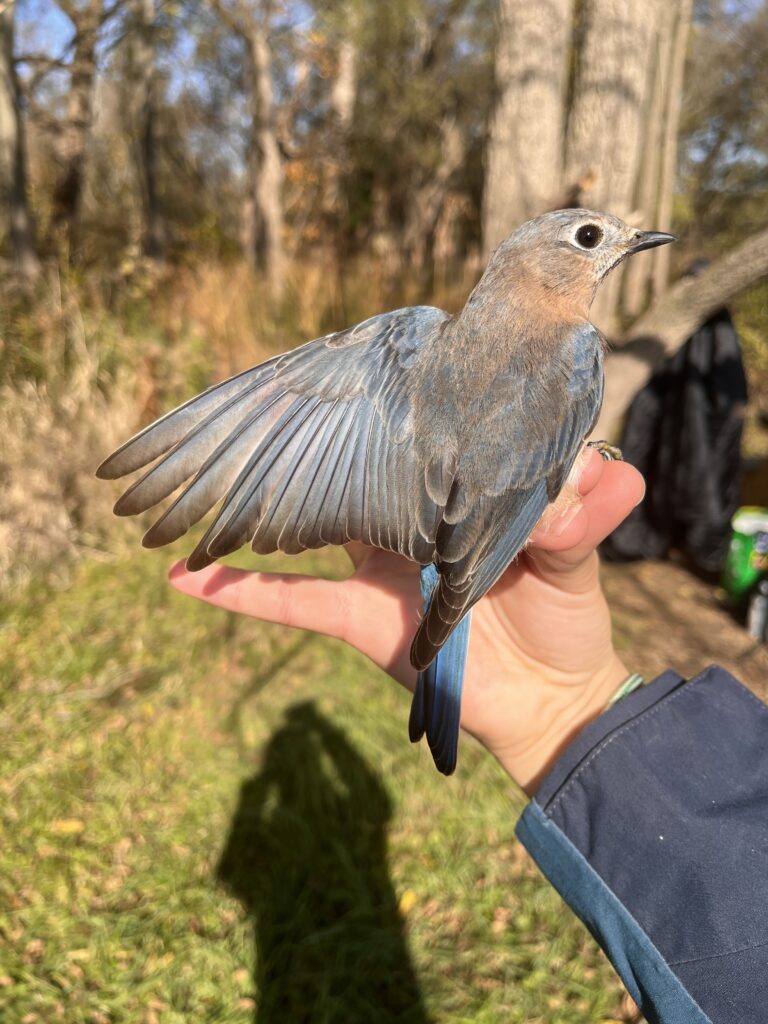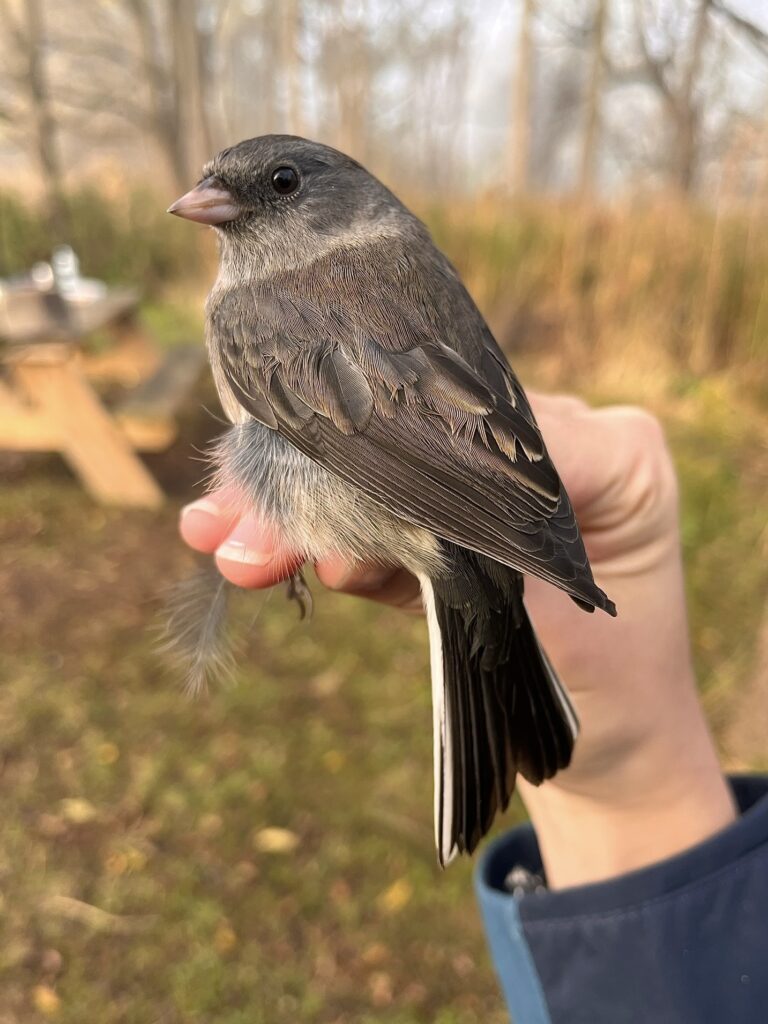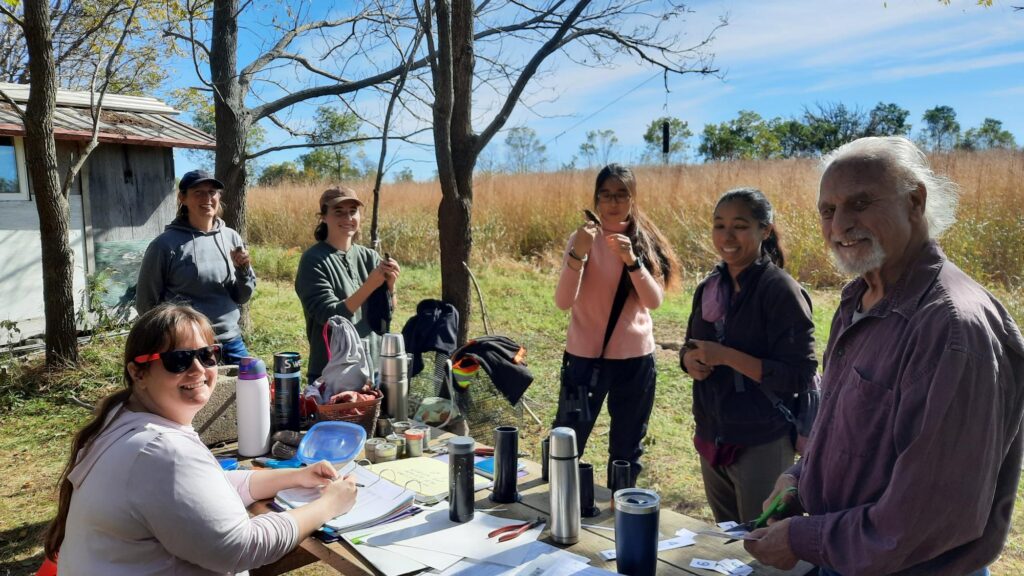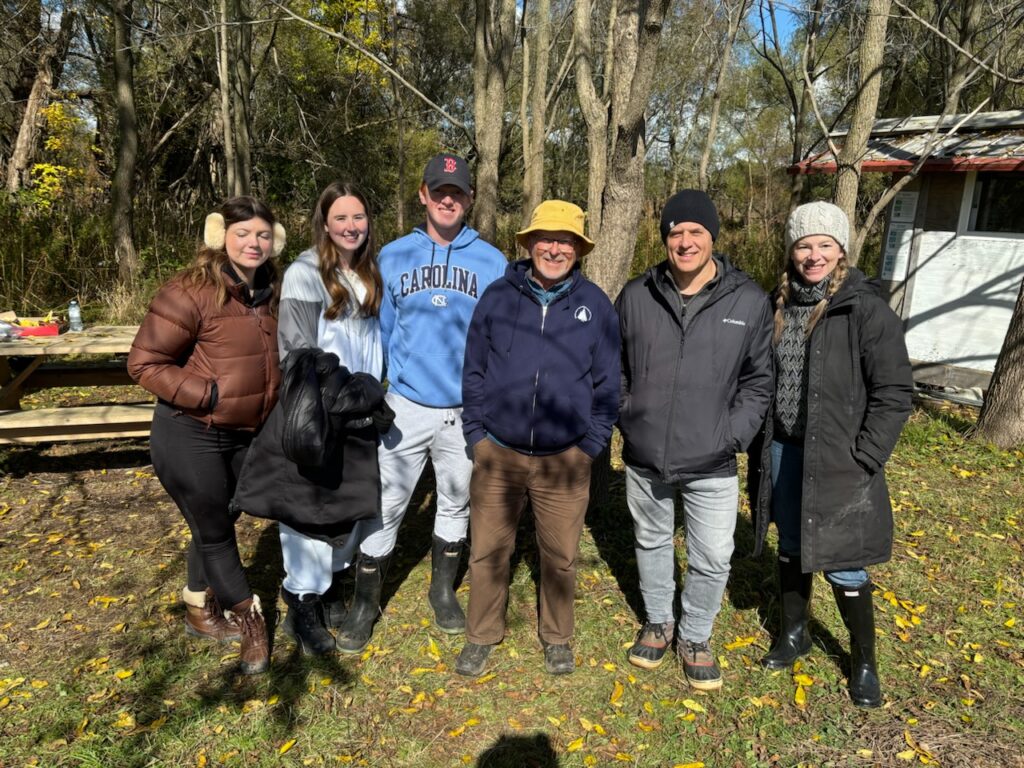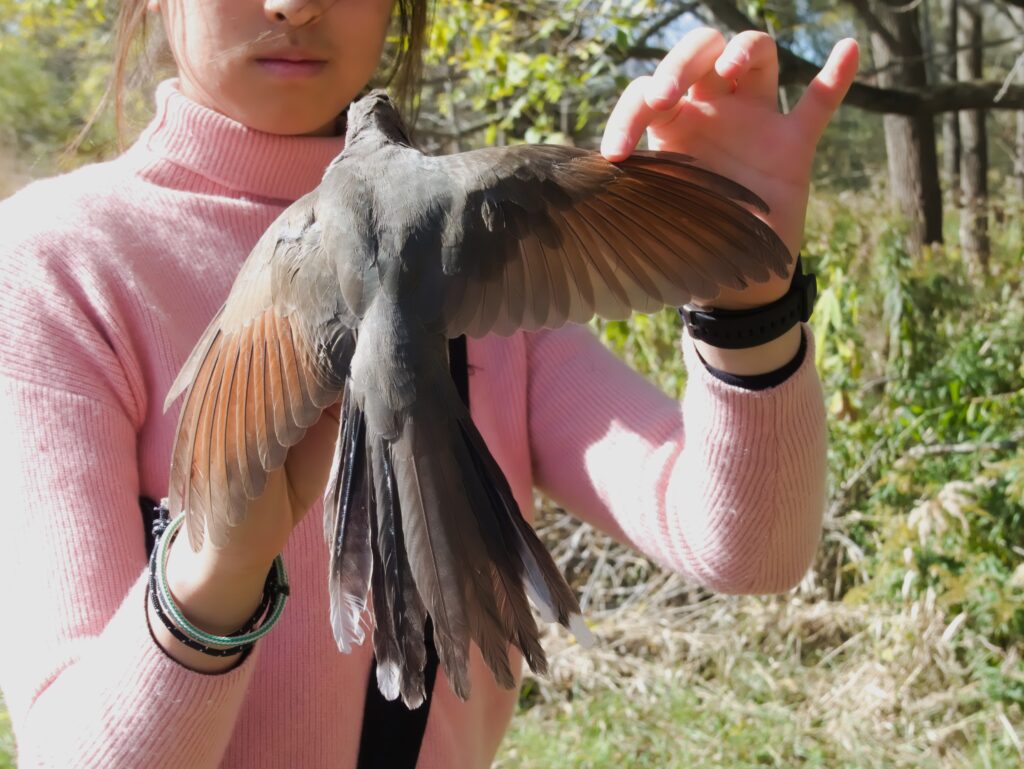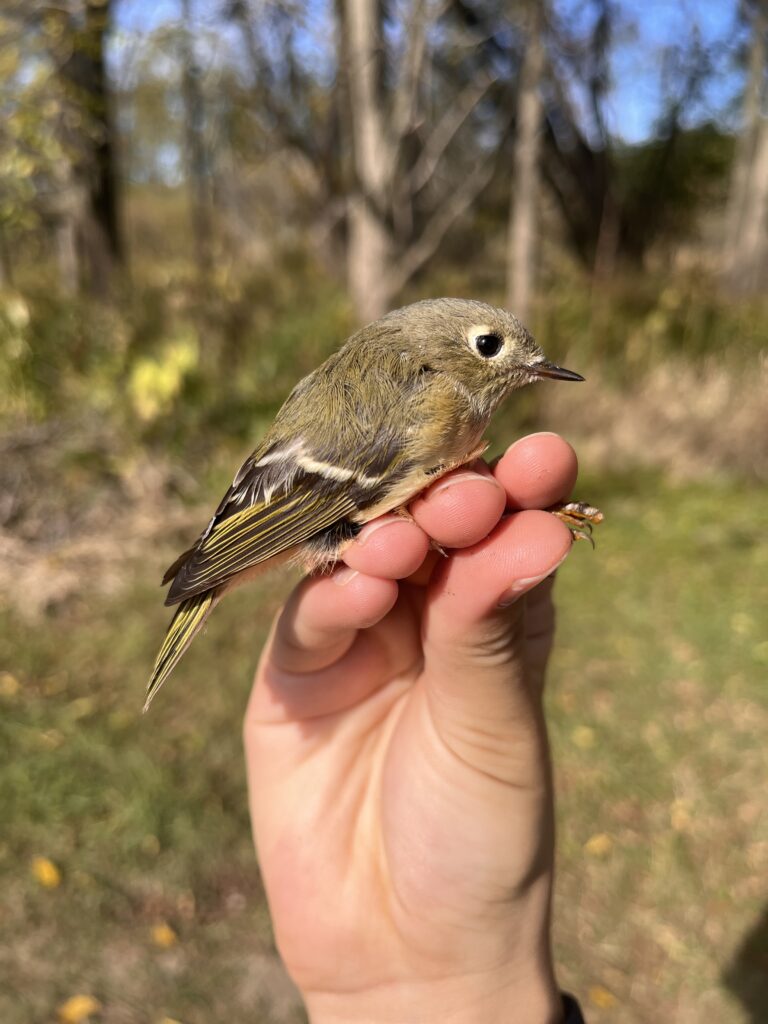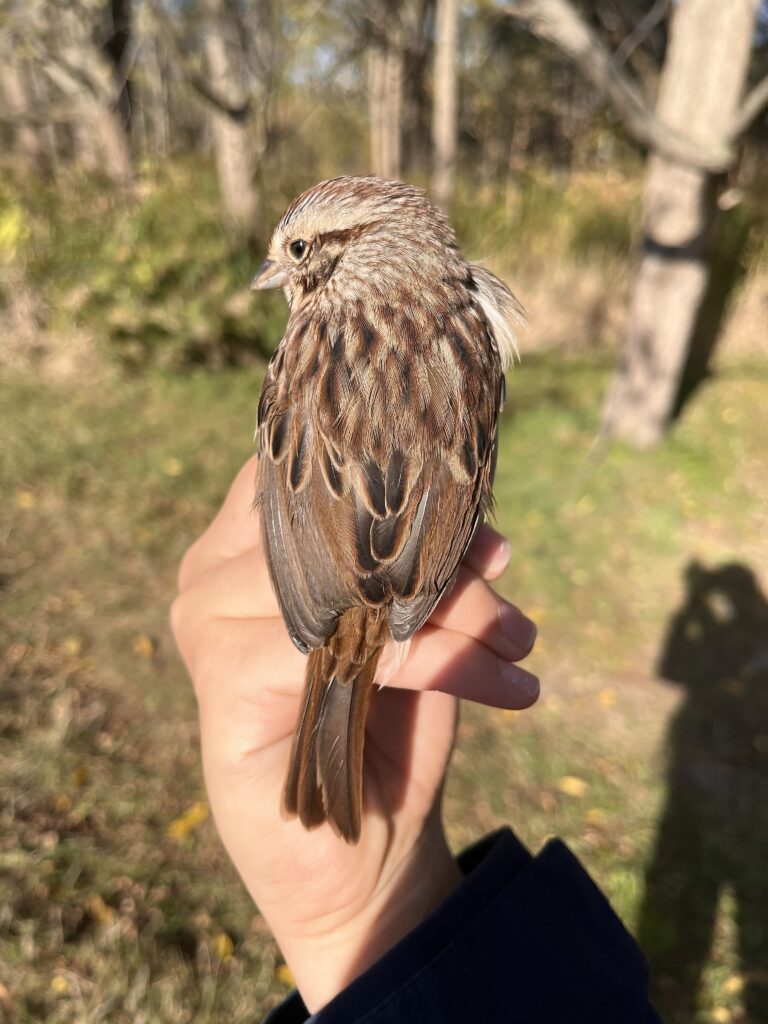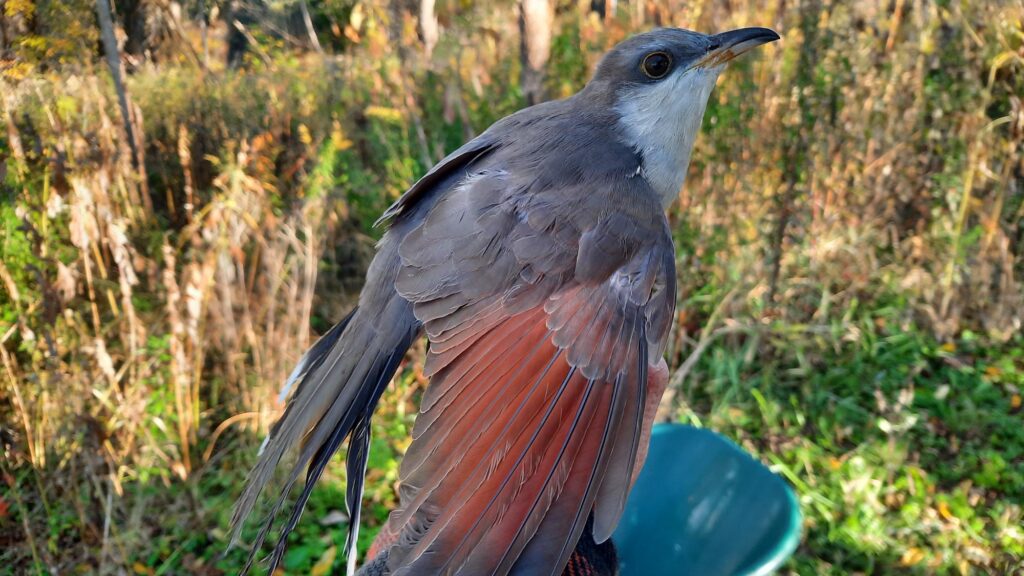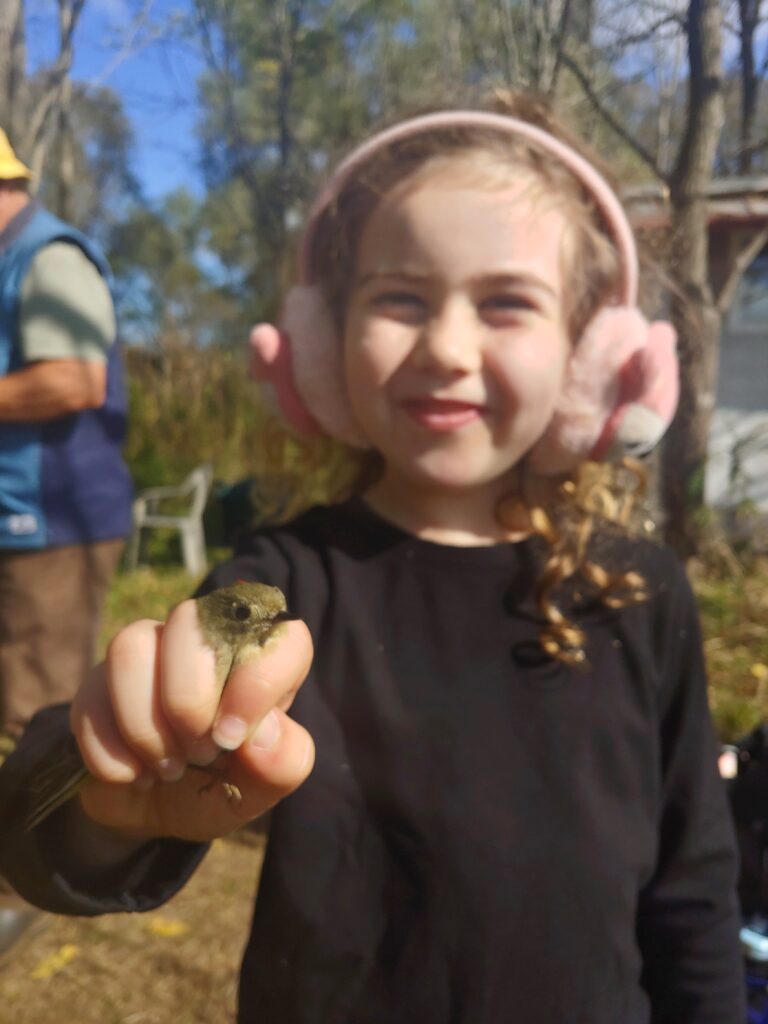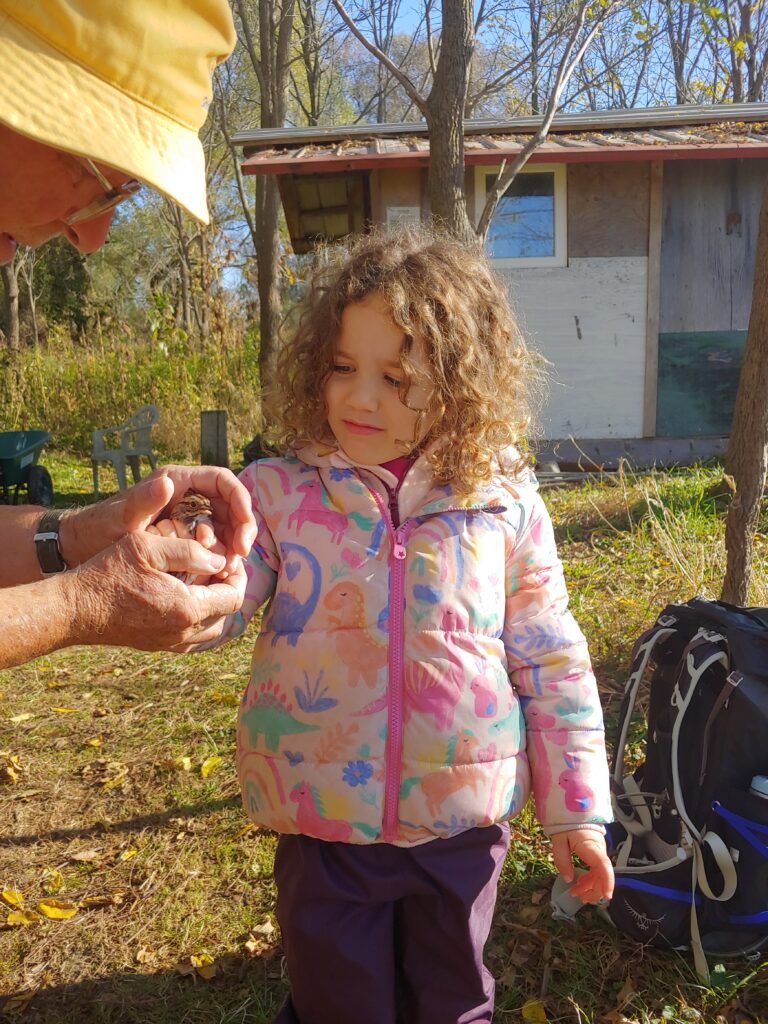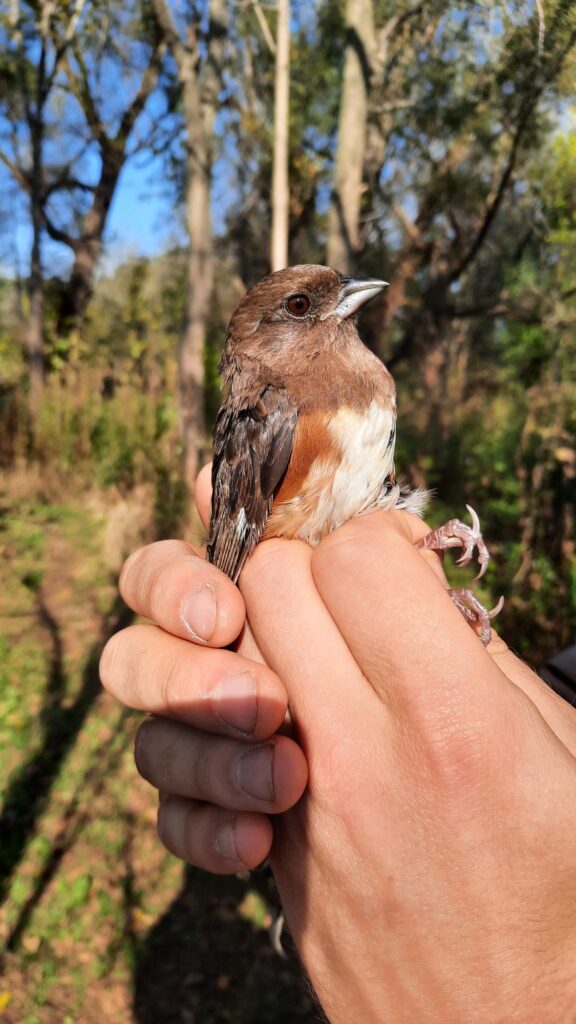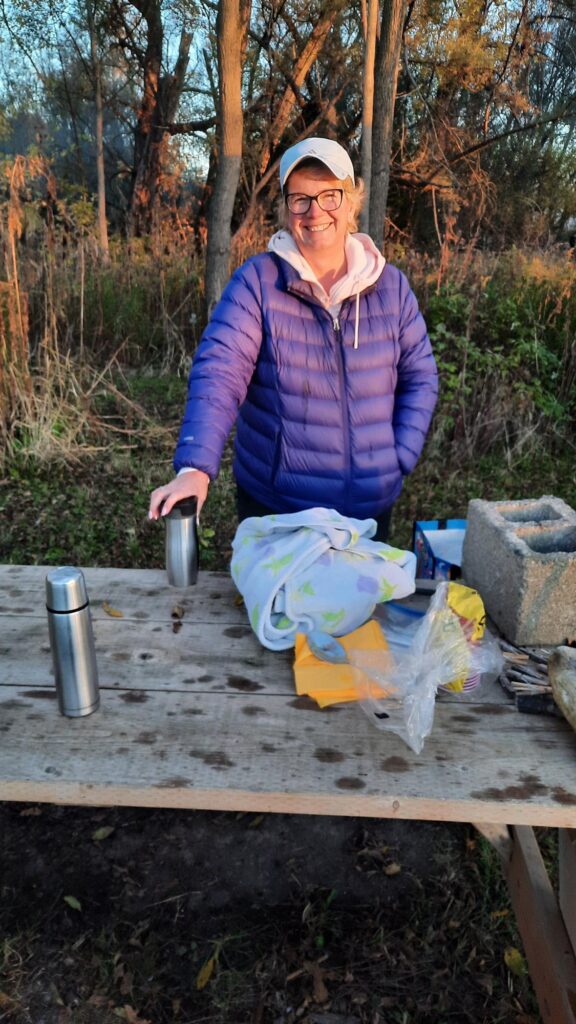
Amy was getting tired of just sending wonderful muffins so she decided to bring freshly made apple crisp hot from the oven and kept that way with an envelope of towels. Quite a breakfast treat I must say. -DOL
Last week and running into the weekend we had cold temperatures and light northerly winds urging and pushing migrants out of the north and hurrying them on their way south. During this time we were REALLY busy – you can see the results in the past post. But Saturday night the wind switched to the SW bringing in unseasonably warm temperatures. And the big migrant push stalled – and it’s been stalled for 2 days.
The patches of prairie grass aren’t nearly so busy and not much has been moving along the wetland edge.
Interestingly, on both days we’ve handled more retrapped birds than new birds. Retraps are usually birds that we’ve banded over the past few days and have been staying put while they finish moulting or fatten up for the flight south…or both. Although we’ve usually banded them within the past 2 weeks, we also get birds that we’ve banded this past Spring or even last year. There’s a lot of food here for sparrows (which make up most of the retraps) and the weather doesn’t lend any urgency to their heading on.
October 20th; Banded 25:
3 Ruby-crowned Kinglets
1 Winter Wren
1 Savannah Sparrow
3 Field Sparrows
2 White-throated Sparrows
8 Song Sparrows
7 Swamp Sparrows
ET’s: 36 spp.
October 21st; Banded 21:
4 American Goldfinches
9 White-throated Sparrows
4 Song Sparrows
4 Red-winged Blackbirds
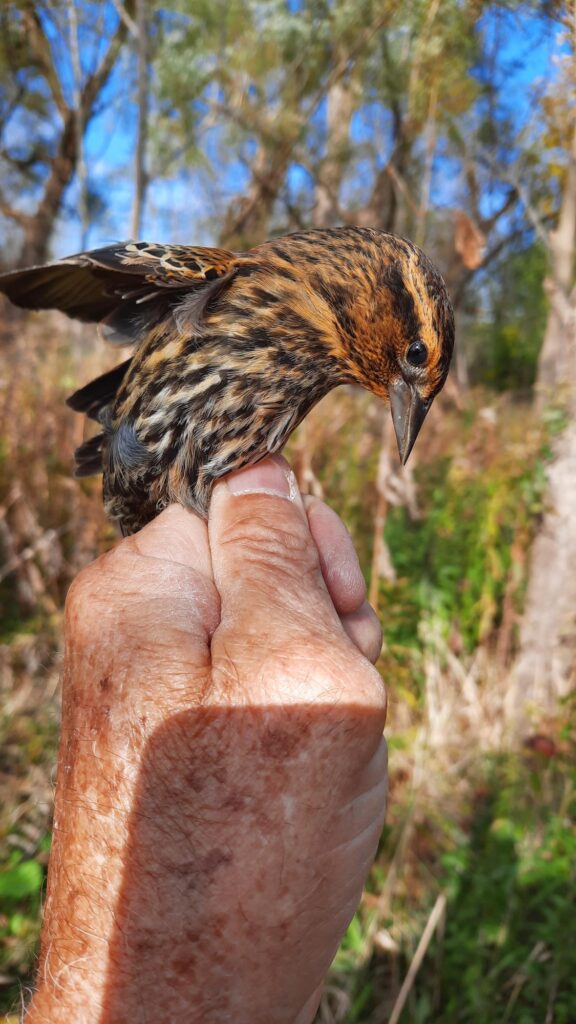
I was struck by the extent – and beauty – of the salmon colouring on this older female Red-winged Blackbird. -DOL
ET’s: 21 spp.
Rick

